
| Theme: Best Practice in Teaching and Learning | |||
 |
||||||
| Use of Health Project and Poster Presentation to Promote Undergraduate Medical Education: Experience from University of Bisha College of Medicine |
 |
|||||
|
||||||
Background
- The Health Education Project (HEP) and use of poster presentation for this project was well received by students and faculty members and are amenable to adaptation and expansion into
- interprofessional education,
- experiential learning, and
- community outreach.
- This work aimed to train medical students to conduct and present Health Education Projects regarding health issues.
Summary of Work
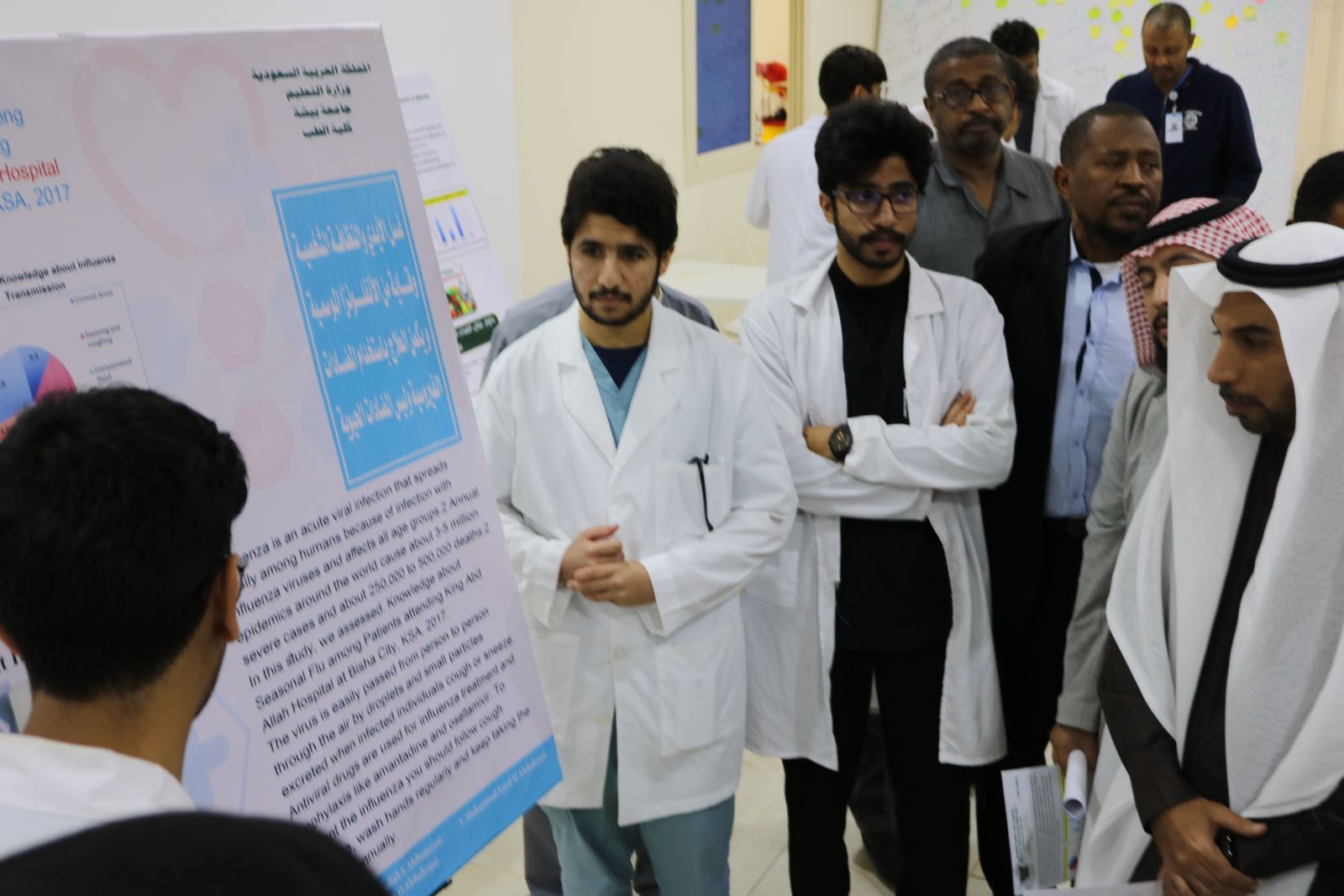
4th-year students presenting their health education poster at the walking gallery at Bisha Faculty of Medicine, 2017-2018
- Fourth-year medical students at Bisha University were divided into teams to conduct different HEPs in the public health course.
- This project based on a community diagnosis investigating the existing gaps of knowledge regarding common public health problems.
- Moreover, they were asked to design health education material to cover these gaps and appropriately present it in a poster presentation.
- Subject experts were prepared to assess students’ work objectively.
Summary of Results
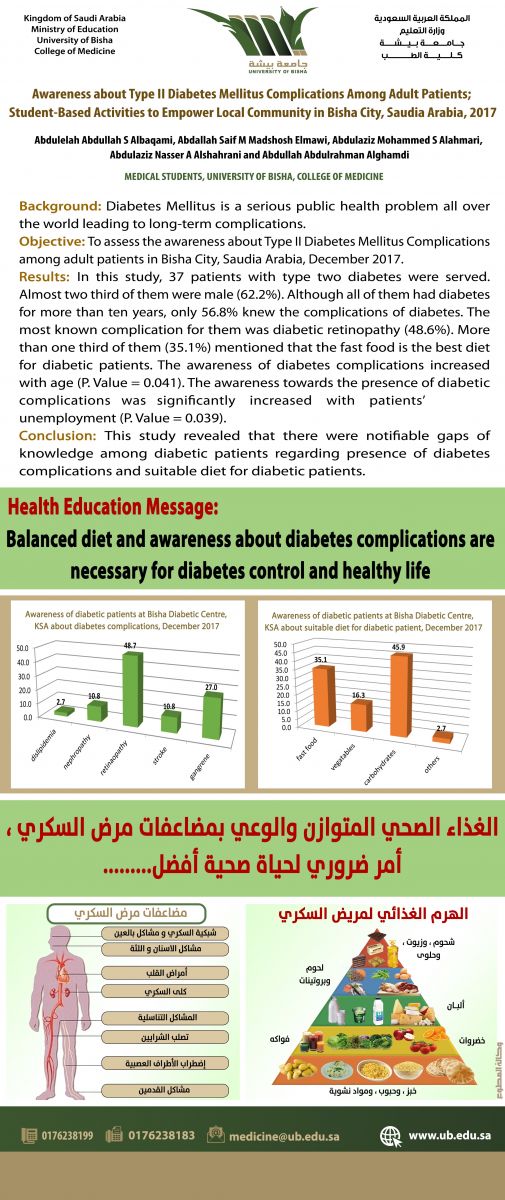
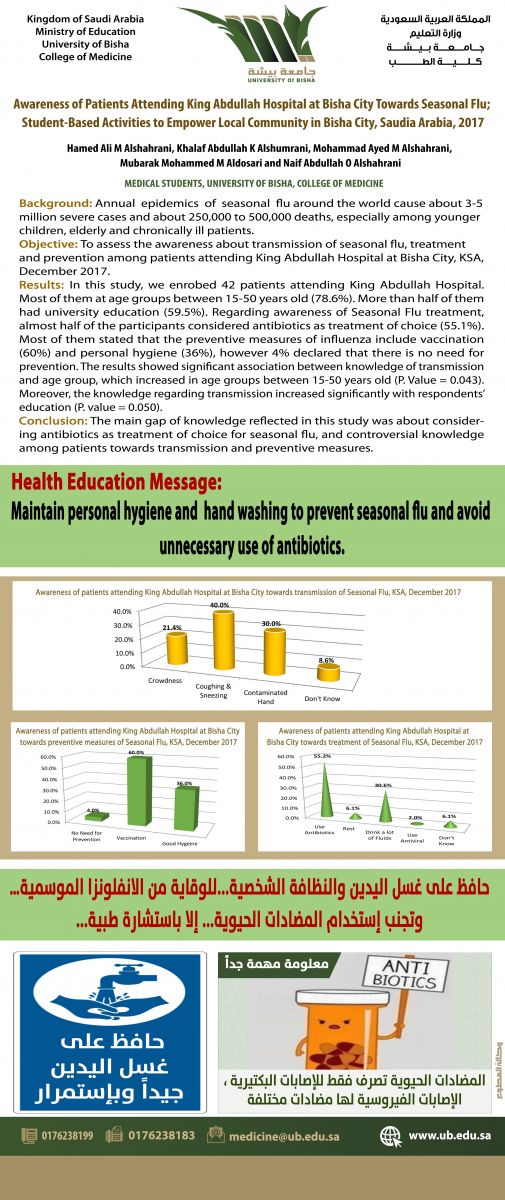
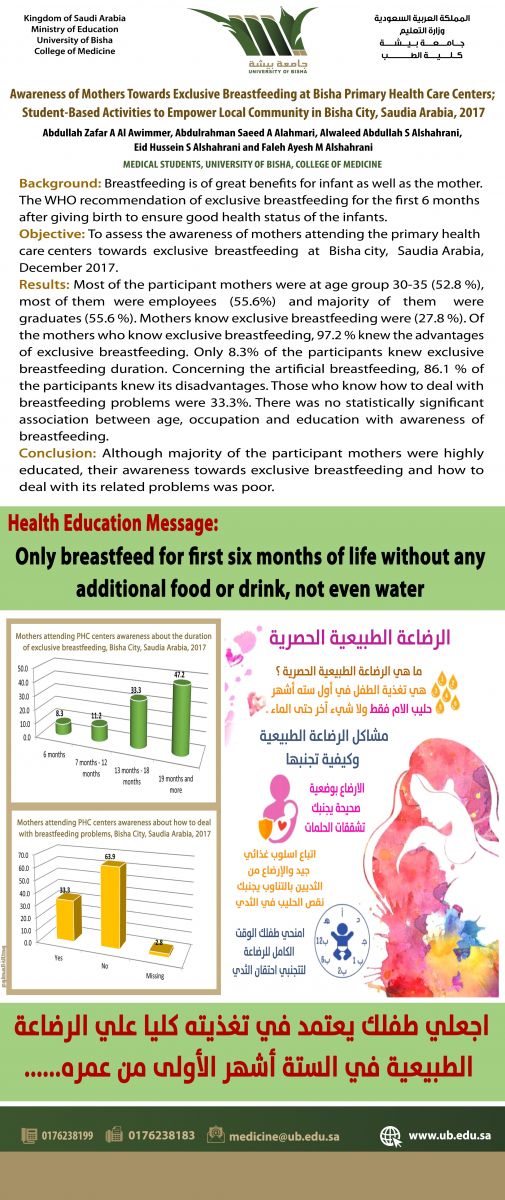
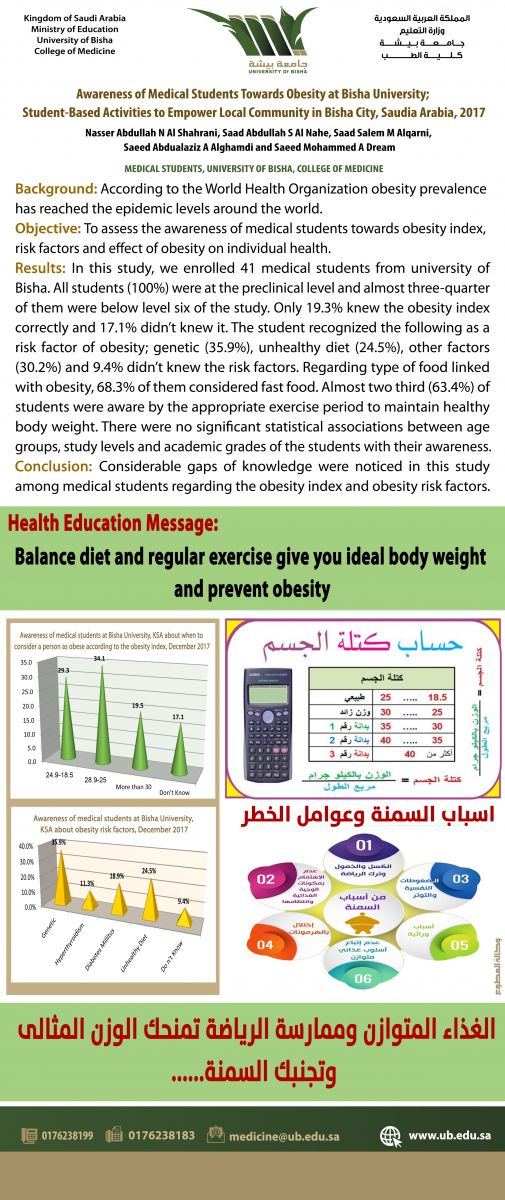
4th-year students health education poster presentations during public health course at Bisha Faculty of Medicine, 2017-2018
- Each students group prioritized the public health problems in their community using a well-structured format and selected the highest priority one for their project.
- Each group conducted a mini survey and found out the knowledge gaps in the community concerning the selected health problem.
- As a result, each group ended up with a health education material to help in covering these knowledge gaps. Furthermore, each group designed a health education poster as a tool of health education and presented it at a multi-class poster presentation.
- Subject experts assessed all steps of the project using a grading rubric.
- Finally, faculty members selected the winning poster at a gallery walk implemented at the University Campus.
Conclusion
- Well-supervised health projects and poster presentations shown in this study were harmonious with the practice and education literature in promoting undergraduate medical education.
- We conclude that HEP and its presentation
- foster knowledge acquisition and interprofessional learning,
- interest in public health and community outreach and
- skills of research and experiential education.
- interest in public health and community outreach and
- foster knowledge acquisition and interprofessional learning,
Take-home Messages
- Health Education Project and poster presentation are highly effective
and promotive teaching methods in undergraduate medical education

Acknowledgement
- The author would like to thank the University of Bisha College of Medicine faculty members for their contribution to the Students’ HEP and poster presentations as followings:
- Dr.Ibrahim Awad Eljack and Dr.Kamal Elhassan: Supervised the students.
- Dr.Masoud Ishag Elkhalifa: Prepared and revised HEP objectives and methodology.
- Dr.Kareem Aldin Saleh: Edited and revised this abstract.
- Dr.Ibrahim Awad Eljack and Dr.Elhadi Miskeen: Edited and revised students’ posters.
- Dr.Abdullah Alshahrani, Dr.Mohannad Alamri, Dr.Mohamed O’haj Mohamed, Dr.Mohammad Alshahrani and Dr.Muffarah Alharthi: Participated in students’ assessment and health education message revision (Arabic version).
- Dr.Abdullah Alshahrani, Dr. Mutasim Elhadi Ibrahim: Supervised and assessed the students’ poster campaigns.
- Prof. Bappa Adamu and Dr. Mohammed Jeelani: Participated in students’ poster by health education message revision (English version).
References
- K. Park, park's textbook of preventive and social medicine, 23rd. edition, January 2015, Pages 854 – 867
- Education for health, a manual on health education in primary health care, (WHO) 1988 pp. 40-83 and pp. 197--258
- Writing in the Health Professions: Patient/Public Education Project. (Internet communication, 1st February 2018 at http://users.clas.ufl.edu/msscha/WHP/patient_public_ed.html)

 Send Email
Send Email